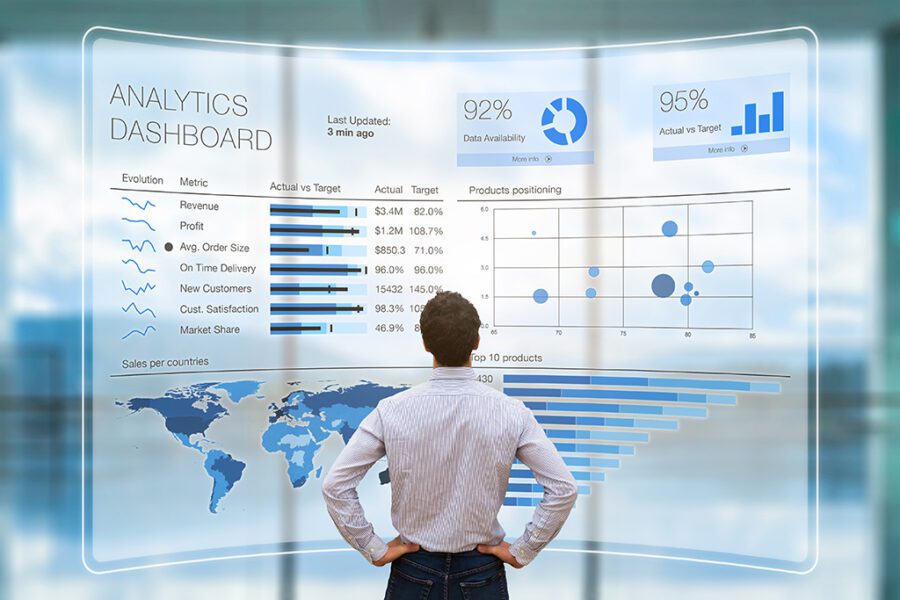In today’s business environment data is a crucial asset that can make or break an enterprise. To unlock the full potential of data, companies use powerful tools such as Power BI and Microsoft Fabric. These platforms form the basis of business analytics, and when connected to Azure Data Factory become an unstoppable force.
Power BI: Your Business Intelligence Companion
Power BI by Microsoft is an effective business intelligence program that allows organizations to visualize and communicate their information. It allows users to create interactive dashboards and report that transform raw data into practical information.

Power BI can be tailored to meet your individual needs no matter if you’re a startup or a large business. It is able to seamlessly integrate with various sources of data, making it easier to combine data from different systems and databases. With its simple drag-and-drop interface even non-technical users are able to quickly produce relevant reports and analyses.
The Power BI platform supports real-time data processing, which means that you’re always working with the most recent data. It comes with a range of visualizations, allowing the data to be presented in a palatable and appealing manner. Sharing reports and collaboration with colleagues enhances decision-making and encourages a data-driven culture in your organization.
Microsoft Fabric: Weaving Data to provide excellence
Microsoft Fabric is an orchestration framework that connects data from Microsoft services. Fabric is the layer that converts your data an easily accessible and usable entity. This allows companies to gain insight quickly.
In a world where businesses are faced with ever-growing data volumes, Microsoft Fabric provides the foundation for data consistency and integrity. Microsoft Fabric integrates with a variety of services from Azure Data Lake Storage, Azure SQL Data Warehouse, and Power BI. The interconnectedness of the platform ensures data flow and insights coming from a variety of sources.
Microsoft Fabric excels at data transformation. Utilize it to tidy up and prepare data for analysis. Additionally, you can use it to ensure that your data is compliant to your company’s guidelines for data governance. Microsoft Fabric makes sure that your data is correct secure, reliable and ready for analysis.
Azure Data Factory: the Gateway to Data Transformation
Azure Data Factory is another essential component in the modern business intelligence landscape. This cloud-based service enables you to manage and schedule data-driven processes. Azure Data Factory allows for valuable insights by orchestrating the transformation of data and its movement.
Azure Data Factory offers a number of advantages, such as its ability to integrate with diverse data sources. Your data can be integrated seamlessly, regardless of whether it’s located on premises, in the cloud or both. It will provide you with the complete picture of your entire data environment, regardless of where your data is located. The platform can handle the processing of batch data, real time streams of data and big data analytics. This is why it is suitable for all kinds of uses.
Azure Data Factory offers a visual interface that simplifies the creation of data pipelines. Even if you’re not a programmer it’s easy to create, schedule and monitor data pipelines. This lets users be in control of data integration and self-service data preparation.
Power BI with Microsoft Fabric, Azure Data Factory, and Power BI
If Power BI, Microsoft Fabric, and Azure Data Factory come together, they create a dynamic trio that can transform your data analytics activities. What they can do:
1. Data Integration Azure Data Factory can connect to a variety of data sources, and guarantee that your data is readily available. This integration tool is integrated into Microsoft Fabric, which orchestrates the data from various services. This makes sure that the data you have properly structured clean, filtered, and ready for analysis using Power BI.
2. Data Transformation: Microsoft Fabric is a crucial component of data transform. It lets you transform your data according to your preferences. Fabric ensures that the data is ready to be used for insight regardless of whether you are cleansing or changing data.
3. Power BI will take over when your data has been refined and is ready to be used. It allows you to create visually appealing reports and dashboards that make complicated data simpler to comprehend. You can then communicate these insights to encourage your team to take the right decisions based on data.
4. Scalability: Azure Data Factory is adaptable to handle growing volumes of data. Power BI combined with Microsoft Fabric provides reliable data as your company expands.
5. Power BI & Azure Data Factory provides real-time insights which is crucial for agile decision-making.
The article’s conclusion is:
To stay competitive in the business intelligence market companies need to be able to use data effectively. Power BI, Microsoft Fabric, and Azure Data Factory offer a powerful combination that can propel your business intelligence efforts to new levels. If you’re looking for amazing visualizations, guarantee accuracy of data, or streamline the workflow of data, this trio will meet your needs. Take advantage of the potential of business intelligence and make the most of your data.

